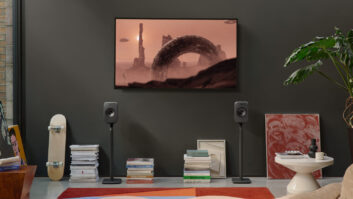STOCKHOLM — Ericsson and Sony believe they can achieve together what they haven’t done on their own in recent years: grab a hefty share of the wireless handset market at a reasonable profit.
Their planned 50-50 joint venture, London-based Sony Ericsson Mobile Communications, will begin operation on October 1 to research, design, develop, sell and market handsets. The event will also mark Sony’s return to the U.S. wireless market exactly two years after it shut down its U.S. marketing operations.
On October 1, the joint venture will announce the name of “an entirely new brand” that will begin appearing on the venture’s first phones in 2002, said Jan Wareby, president of Ericsson’s consumer products division. During a transition period of “a couple of quarters,” Ericsson- and Sony-branded phones will coexist with phones bearing the new brand, which “will use Sony Ericsson as a foundation,” he said.
Ericsson phones introduced at March’s CTIA show, including a trio of GPRS phones, will be marketed under the Ericsson name when they’re launched later this year according to Ericsson’s previously announced timetables, a spokeswoman told TWICE.
R&D, sales and marketing functions will continue at Ericsson’s U.S. facility in Research Triangle Park, N.C., Wareby said.
The companies cited several reasons for teaming up. One is each company’s complementary technology strengths. “We come from the wireless technology side. They come from the consumer electronics features and function side,” Wareby said. With the mobile Internet and high-speed wireless technologies entering into their own, “phones are on the way to crossing the border” to converge with headphone stereo products, portable game machines, and digital cameras. “We [Ericsson] need a deeper understanding of consumer electronics, entertainment and audio/video,” he continued.
As the market moves to wireless broadband multimedia, said Sony president Kunitake Ando, “millions of customers will require mobile handsets that can handle rich content such as movies, pictures and games smoothly and effortlessly.”
The two companies also complement each other in geographic market share, with Sony stronger then Ericsson in Japan, Ericsson stronger than Sony in Europe, and Ericsson in the North and South America markets where Sony is absent, said a Sony Europe spokesman.
In the first quarter, an Ericsson spokeswoman said, Sony held only a 1-2 percent worldwide market share but a share of about 10 percent in Japan. During that time, Ericsson’s share was 7-8 percent worldwide and about 10 percent in North America.
At the outset, the joint venture’s worldwide market share rank will be third, a spot that Ericsson already holds on its own.
In the United States, Sony will benefit from Ericsson’s infrastructure and handset relationships with carriers, which buy almost all phones sold to consumers through direct and indirect channels.
The joint venture will continue to use both parent companies’ existing production facilities. Ericsson has outsourced all production to contract-manufacturer Flextronics. Sony operates its own factories, which will remain a part of Sony, the Sony Europe spokesman said.
Neither company commented on the amount of money they will invest to create the joint venture.
Some analysts saw potential in the deal, but others were skeptical. Gartner Group analyst Brian Prohm cited “a significant amount of latent potential” because Ericsson’s expertise in engineering the guts of a phone will be paired with Sony’s expertise in designing consumer-savvy, consumer-friendly product designs. Sony also has access to the audio and video content that could be downloaded or streamed to phones, he said. On the other hand, Prohm noted, because the joint venture’s first products won’t be shipped until late 2002, Nokia has almost two years “to craft a response.” He also pointed out that the wireless industry’s two previous joint ventures — Lucent/Philips and Sony/ Qualcomm — failed miserably. Cahners In-Stat analyst Ray Jodoin warned that a 50-50 ownership structure could lead to impasses because of the two companies’ different corporate cultures.













